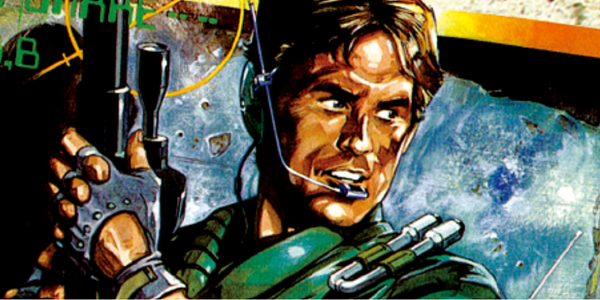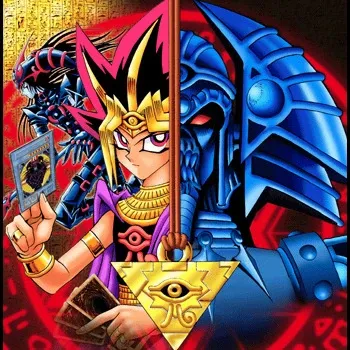The Kojima Files #2 - Snatcher (1988)
A cyberpunk narrative steeped in cold war and nuclear anxieties that feels oddly pertinent in 2025. Also the first major example of Hideo Kojima being bad at writing women.
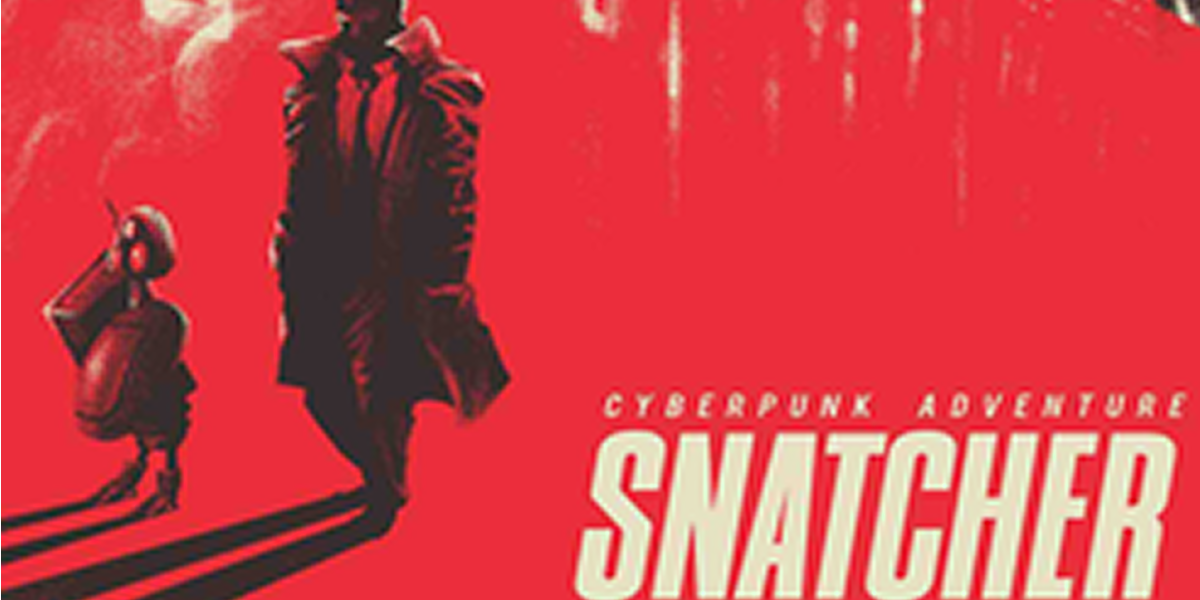
SPOILERS AHEAD. DISCUSSION BASED ON 1994 SEGA-CD ENGLISH LANGUAGE RELEASE
"We do not have to invade the United States, we will destroy you from within." - Nikita Khrushchev, Prime Minister of the Soviet Union (1956).
Amidst the nuclear tension of the Cold War, Soviet leaders frequently alluded to designs to dismantle the core of Western Capitalism not through military might but through political and cultural infiltration, transforming the west into Soviet allies from within. Hideo Kojima's 1988 Cyberpunk Visual Novel Adventure game "Snatcher", released in the west in 1994-95 for Sega-CD, imagines a more literal interpretation of these Soviet plans: "Bioroids" capable of entirely replacating a person's physical form. Snatcher taps into Red Scare, or in Japan's case "Red Purge", anxiety in place of the more common Japanese economic dominance anxiety of Snatcher's inspirations.
Snatcher, while quite derivative, is the first example of Hideo Kojima trying to capture a grand narrative within video game form. While he would go on to find more of his own identity in later releases, this is where the modern idea of Hideo Kojima game's start to form. His love of hollywood movies on full display in its similarities to Ridley Scott's Blade Runner, his penchant for political intrigue and social commentary in his narratives, his "clever" naming conventions, and his notoriously awful approach to writing female characters.
Blade Runner and Orientalism
It is impossible to talk about this game without also talking about the 1982 movie Blade Runner, whose influence is unavoidable throughout Snatcher. Protagonist Gillian Seed is a cop specialised in hunting androids that disguise themself as human, much like Blade Runner's Rick Deckard. Seed's design is highly reminiscent of Deckard, most noticeably in his brown overcoat and Jeff Lupetin's performance that clearly aims to imitate Harrison Ford's trademark baritone and air of indifference. Likewise, Snatcher's mysterious bounty hunter Random Hajile, who plays the important role of humanising the concept of artificial human, bares a striking resemblance to Blade Runner's antagonist Roy Batty.
Unlike Blade Runner however, Snatcher struggles with capturing the nuance in its existentialist theming. The reveal that Random is a higher quality Snatcher created by a good scientist, MG1's Dr. Pettrovich Modnar, as opposed to all the other evil and inferior Snatchers being created by his son Elijah Modnar (I wonder what this name is backwards) for nefarious purposes, removes agency from the Snatchers and greatly diminishes questions of what it means to be human in favour of presenting an intimidating adversary for the game's action sequences. There are other themes we will get to shortly that I think Snatcher captures much more effectively, but with how heavily the game wears its Blade Runner inspirations on its sleeve, it is impossible to ignore how lacking Snatcher is in this regard. In Kojima's defence this may be a result of the second half of the game's story never coming to life but as it stands it presents a veneer of questions about existence without any significant meat on the bones.
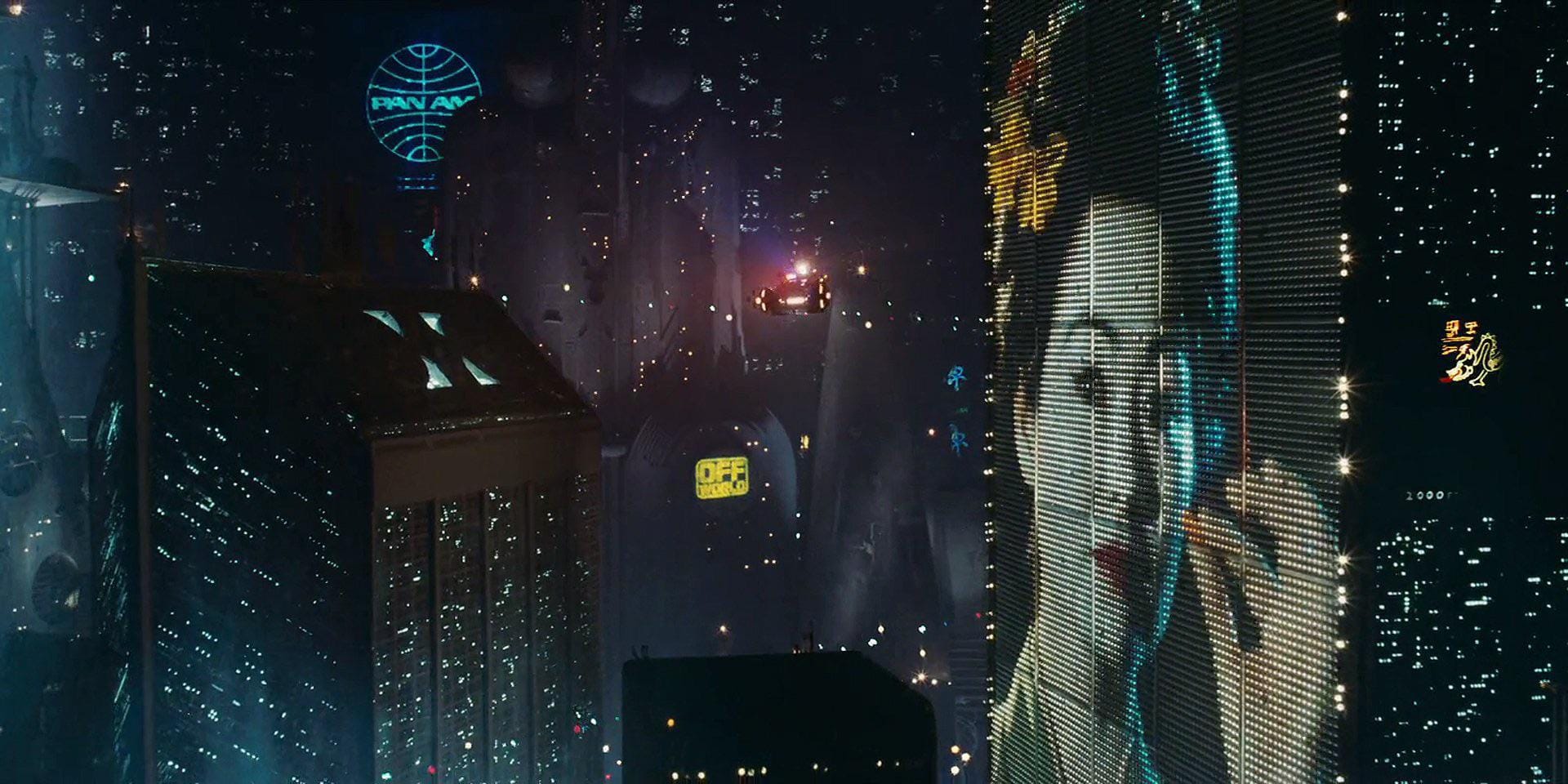
Where Snatcher does differ from Blade Runner is in the specific anxieties the cyberpunk themings are attempting to grapple with. Blade Runner, like many of the foundational cyberpunk works are grappling with a specifically American anxiety around the growing success of the Japanese economy in the 1970s and 80s and a resultant 'Japanification' of American society. (here's a great article from George Yang at Wired about this). In Blade Runner this is most commonly expressed by the reoccuring Geisha advertisements (and a Coca-Cola ad in Japanese too) but Snatcher takes place within Japan, in 'Neo-Kobe City', a futuristic version of the real city of Kobe, noted to be uniquely globalised compared to the rest of Japan. Being created by a Japanese studio with a Japanese director who is renowned for his love of America culture, this globalisation is instead painted as largely a positive, leaning into American aesthetics almost purely for the sake of coolness. Likewise, the Japanese aesthetics lose their negative connotations when divorced from the idea of American economic defeat. Snatcher is not without a degree of orientalism, having a couple of unsavoury depictions of Chinese people as untrustworthy and scheming, but it is left with a void it needs to fill.
Red Scare
Where Snatcher shines brightest is in the way it evokes paranoia in the player. The player is planted into Neo-Kobe with very limited information of the world beyond learning that the Soviet Union ceased to exist 50 years ago due to the accidental triggering of an extremely powerful bioweapon,that people are being replaced by bioroids known as "Snatchers", and that it is Gillian's (and therefore the player's) job to hunt them down as a "junker", a cop-like figure responsible for dealing with the Snatcher menace. Gillian and his wife Jamie are both dealing with a case of amnesia and their case files on Neo-Kobe's mass surveillance system mysteriously require very high security clearance to view.
From the get go, you know nothing and you can trust no one - least of all the government agency you work for. This feeling is exacerbated by the controls of the game itself. The game flows between a variety of screens that are connected like a web, each screen typically depicts a room and allows you to individually look at and investigate objects in the enviroment and this includes any other people that may be present. Being a good detective, or just a player that doesn't want to miss anything, this leads you to physically investigating every single person you interact with. This investigate action almost never returns anything on living people but confused frustration from the person being investigated and yet the option never goes away, inviting the player to wonder if this may be the time they catch a Snatcher slipping up.

A similar example is powerfully used in the game's first major story sequence. After an emergency distress signal comes in from another junker who is out on a investigation while Gillian is getting his orientation. Gillian is sent to go investigate the abandoned warehouse that the signal was sent from and it is here you are introduced to your robot companion, Metal Gear's, motion detector. Similar to investigating people, the motion detector pretty much never detects anything significant, especially when you are in "abandoned" buildings that may play host to the Snatchers, yet on every single screen you can take the time to ask Metal Gear if his motion sensors detect anything.
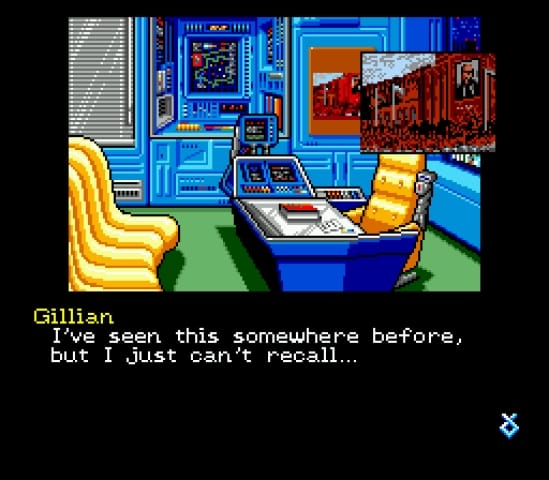
Design choices like this do a fantastic job of instilling in the player this sense of paranoia around the threat of the Snatchers to both yourself and your loved ones, emphasised by your first interaction with them being finding the decapitated corpse of your now former coworker, detective Jean-Jack Gibson. As the game begins to establish the connection between the Snatchers and the city of Moscow, it becomes very apaprent the game is evoking the emotions of the Red Scare era.
The "Red Scare" was an era of post-WW2 politics in which America's political leaders, most notably Republican Senator Joe McCarthy, fearmongered around the infiltration of American society, culture and political institutions by communists. While McCarthy's, ill-advised, idea to accuse the army of being infiltrated led to the end of the peak of the McCarthyism era of the Red Scare in America in 1954, the country was still left with the scars of deep distrust of their institutions and even their fellow everyday citizens.
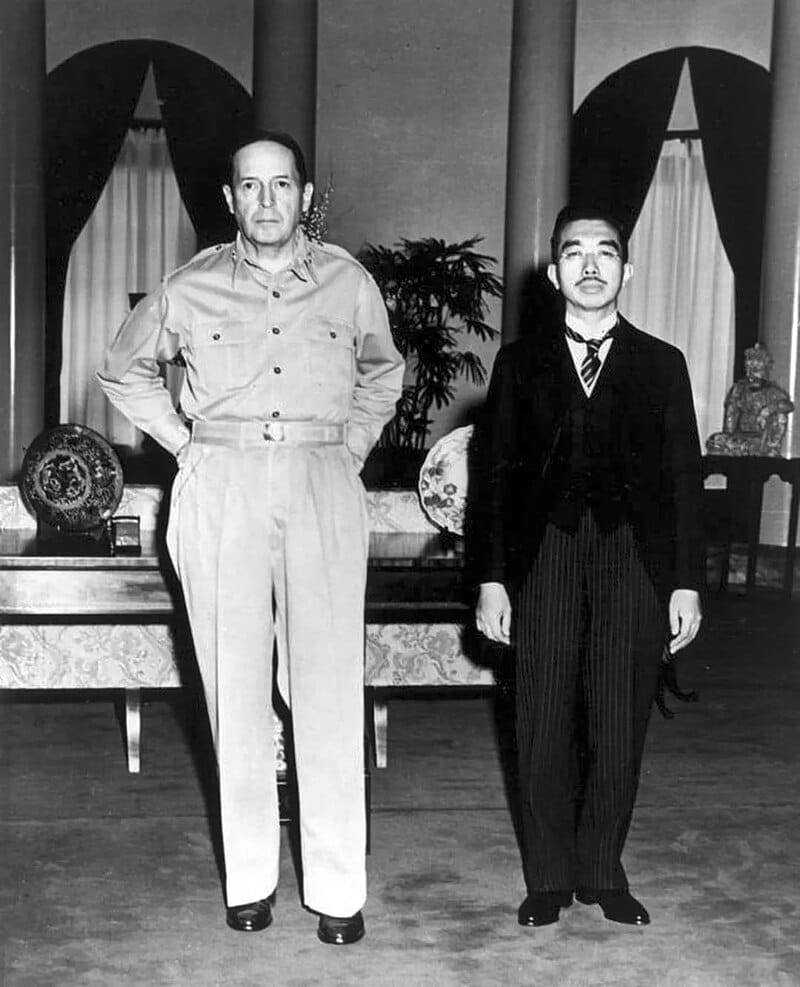
In this post-war era, Japan also had its own Red Scare, known as the "Red Purge." Following the war and the ensuing American-occupation of Japan, the country was reshaped into a country more sympathetic to American and Capitalist views under the watchful eye of General Douglas MacArthur. Growing labour movements in the country quickly became entwined with the Japanese Communist Party and led to a strong growth of left wing political movements in the country. In the 1949 Japanese elections the Japanese Socialist and Communist parties picked up a combined 23% of the total vote. Despite this, the conservative Democratic Liberal Party (DLP), precursor to the modern day Liberal Democratic Party (LDP), picked up almost 44% of the vote and secured a comfortable parliamentary majority under Japan's new "First Past the Post" voting system.
With the right wing in power, and the backing of the occupying US, Japan began a series of purges of Communists, suspected Communists and suspected Communist sympathisers driven by a similar Red Scare fear that was ongoing in America. This resulted in a concerted effort to dismantle left-wing thought in politics, academics and the workplace. MacArthur suggested an entire ban of the JCP from Japanese politics and American professor Dr. Walter C. Eells was sent on a 6 month tour of Japanese universities to denounce communism. On June 6 1950, in response to a series of articles decrying the policies of the occupation in JCP's newspaper Akahata, MacArthur would order the Japanese government to purge 24 prominent members of the Japanese Communist Party, banning them from all political activity and academic journals. A day later this ban would be extended to the entire Akahata editorial board. Throughout that summer mass firings of suspected communists would begin, initially this included university professors and members of the press but was later extended to private industry. In total, around 22,000 people would lose their jobs due to their suspected political beliefs.
Snatcher in this reading essentially puts you in the role of a special agent with the responsibility of conducting this purge. Interestingly, unlike Blade Runner making Deckard confront the horrors of his actions, Snatcher presents the bioroids, at least the inferior ones developed by Elijah Modnar, as a pretty unequivocally evil force marching to one master plan for world domination. Kojima takes a much different viewpoint to that of author Philip K. Dick views on his novel Do Androids Dream of Electric Sheep, which Blade Runner is an adaptation of. Philip has been noted in saying that the Replicants in his books are an allegory for the Nazis, people with "a mind so emotionally defective that the word ‘human’ could not be applied to them" while the Blade Runners, in hunting them, were becoming like the Nazis, adopting a similar defect. In contrast, Kojima presents the destruction of the worst of these people as a necessary action but notes that not all of them are bad people that need this treatment through the sacrifice of Random Hajile.
This game has made me talk about Donald Trump and I hate it for that
The final act of this game features a dramatic twist that the Snatcher's master plan was to find their way into an upcoming international meeting to discuss the Snatcher threat and then replace the world's political leaders with Bioroids that would enact Snatcher friendly policies allowing them to take over the world in its entirety. To do this they had already snatched the Junker police chief, seen as the foremost expert of the Snatcher threat that is currently localised to Neo-Kobe, who was scheduled to attend the aforementioned meeting of world leaders to advise on how they should approach the possibility that the Snatcher threat may become a global one. Furthermore, it is revealed that the bioroids were initially a Soviet scheme that had the goal of replacing every single American (or at least an entire city like New York) overnight, quite literally taking over the country from within.

Had I played this game in say 2015, I would have found this a pretty overdramatic twist that ultimately falls into the Red Scare narratives it looks to tackle. Unfortunately, I played this in March of 2025 mere weeks after US President Donald Trump made a dramatic show of booting Ukrainian president Volodymyr Zelenskyy from the Oval Office during peace talks for the ongoing Russian invasion of Ukraine. At a time when Trump's America has turned away from Russia being their biggest adversary and now looks to provoke Canada, Mexico and Europe instead, at best enabling the imperialist ambitions of Russia and at worst egging them on, it is extremely hard to not feel like we are living in the worst possible version of a Cyberpunk dystopia, we don't even have the flying cars.
In the face of this threat in Snatcher, world leaders are willing to use the nuclear option and sacrifice the entireity of Neo-Kobe City in order to get rid of all the Snatchers. While the nuclear option is presented as appropriately devastating (and is a part of Kojima's continued nuclear anxiety in his work), the ultimate solution is still a more targeted satellite airstrike that destroys their base of operations that host their Bioroid creation facilities and most, if not all Snatchers. While this use of extreme explosive force would be more than overkill in the real world it paints a sharp picture of the urgency needed to address threats to democracy. In the real world however it feels like all US democrats are interested in doing is washing their hands of any responsibility as American fascism destroys the civil liberties of its citizens. Even world leaders, such as the UK's Keir Starmer, while clearly opposed, are giving concessions to avoid recieiving the brunt of any potential retaliation. Snatcher now holds up a mirror to current world events and powerfully asks "Are our world leaders doing enough?"
BONUS: Kojima is REALLY bad at writing women
This is the end of the main thesis of the article, discussing Snatcher's Red Scare themes but I really felt like I could not in good faith talk about this game for this series and not bring attention to just how awful the writing of women is.
I had actually planned initially to wait until I got all the way to Metal Gear Solid 5, with Quiet and the "she breathes through her skin" fiasco, to discuss the continual poor writing of women in Hideo Kojima games but Snatcher is so exruciately bad on this front that about a third of the way through the game I knew I had to spend some time talking about this and unfortunately, it only got worse after that.
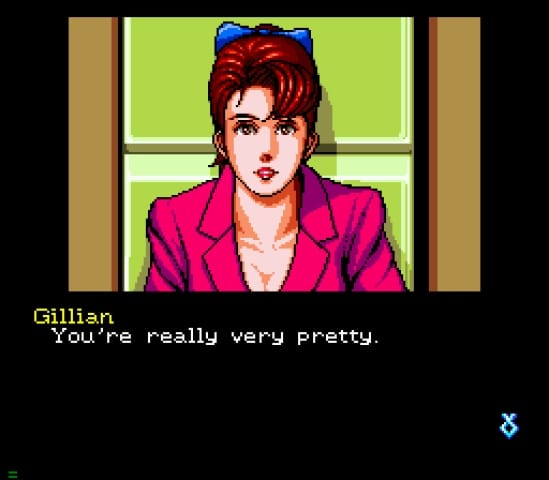
During the opening sequence of the game, where Gillian undergoes his orientation at Junker HQ, he is shown around by the secretary Mika. Upon seeing Mika, Gillian, whose only known character trait at this point is the fact he is married, begins oogling Mika. The game continues this by providing multiple different dialogue lines for the options of looking at and investigating Mika across the variuous rooms of Junker HQ as she shows Gillian around. These range from further insights into Gillian being a creep to Mika flirtatiously responding to the attention, while trying to keep Gillian at an arm's length (perhaps literally). However, much like that scene in Blade Runner, where through modern eyes it can feel intentionally disturbing, the game makes it very clear any push back from Mika is her simply playing hard to get as she asks Gillian for a dinner date towards the game's conclusion.
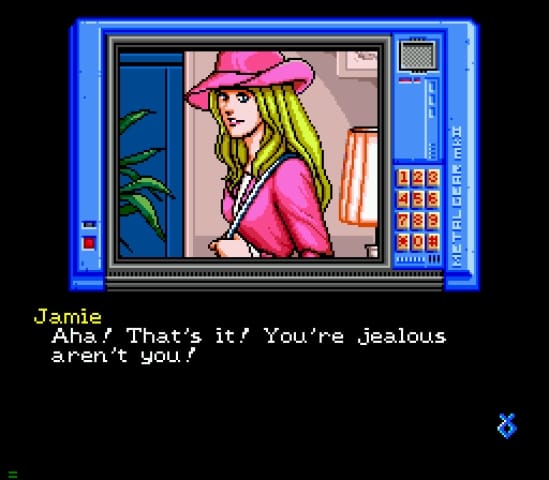
The handling of Gillian's wife, had it not been for her being totally fine with Gillian's clear interest in other women, is a bit more tolerable. For almost the entire run of the game Gillian and Jamie are separated, having had relationship issues due to their shared amnesia. Gillian and Jamie communicate over video calls and this serves to both move the narrative forward and provide insight into their strained relationship in a way that is honestly quite compelling. The biggest way the game enforces this is through a set of dialogue options to ask Jamie out on a wide variety of dates that will always be rejected. The shear number of options is effective in establishing a level of desperation in Gillian's character when it comes to repairing his marriage, even if him drooling over Mika at every given opportunity undercuts this.
Up to this point Snatcher has obviously objectifying writing of women (especially given Mika and Jamie are 2 of just 5 female characters, one of the remaining 3 being an uninterestingly evil snatcher and the other being an actress who moonlights as an erotic dancer) but I was viewing it as talking points to make note of for when I would finally tackle the totality of Kojima's tendency for misogynistic presentations of women. It was then that I was introduced to 18 year old Katrina Gibson, daughter of Jean-Jack Gibson, the aforementioned decapitated detective. The first time you interact with Katrina is when you have to visit her home shortly after she has been made aware of her father's passing to collect evidence. Upon entering the house and first seeing the grieving Katrina, Gillian, much like with Mika, makes mental note of how pretty he thinks she is and has a variety of "look" and "investigate" options that continue to show Gillian undressing the grieving teenager. Gillian eventually gets around to comforting Katrina, wiping away her tears, but the actions feel not out of kindness but out of an excuse for Gillian to get closer to the grieving daughter. This feeling is brought into full-view by Gillian then asking Katrina out.
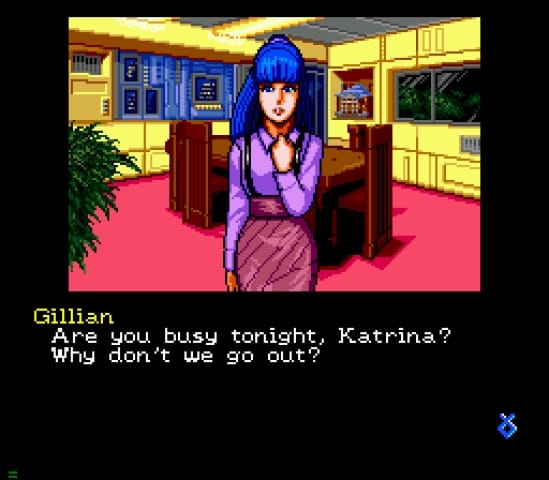
With Katrina now living alone, Gillian offers Katrina to stay with him should she feel lonely and then goes about continuing his investigation. Some time later Gillian returns to his apartment and is met with his lights already being on and his door being unlocked. As he moves through his house he hears noise coming from the bathroom, the shower is on. Gillian, scared a snatcher had caught wind of his investigation and had come to end him like they did Jean-Jack, carefully investigates his shower only to be greeted by a naked Katrina. Gillian and his robot companion clearly both find the sight extremely hot (and that's not just the hot shower water Katrina sprays at them). When Katrina gets out of the shower she is wearing just a towel that is somehow skin-tight (like so tight you can see her nipples poking through) and is apologetic for startling Gillian, then she lets her hair down and Gillian and his robot once again are clearly way too into this and from this point on Katrina clearly has a shy crush on Gillian. While this plotline would already feel pretty exploitative and objectifying, I did tell one small half-lie. While Katrina is 18 in the international Sega-CD releases, in the initial Japanese release she is just 14 years old, a literal child.
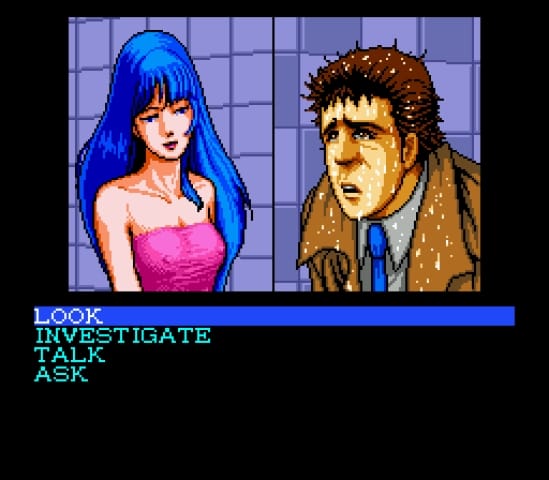
The game wraps up all of this in a final scene that sees all 3 women sending off Gillian on a mission to Moscow, for a sequel that would never materialise. Gillian's marriage is restored, Mika is desperate for the dinner date and Katrina still clearly has feelings for him too. The female cast of Snatcher is paraded at the game's closing moments to show how cool Gillian (and by extension the player) is for saving Neo-Kobe City.


